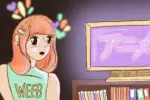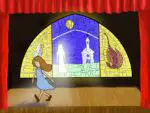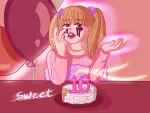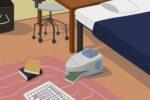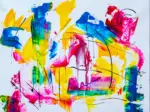Growing up, there seemed to always be an endless selection of art mediums. From traditional tools like color pencils and markers to papier-mâché and glitter glue, the possibilities were endless. But somewhere down the line between childhood and adulthood, the magic of creating seems to disappear.
Pablo Picasso once said, “Every child is an artist. The problem is how to remain one once we grow up.” Although this quotation is from nearly 50 years ago, the idea remains true today. Most adults, when asked to draw, become embarrassed and label themselves bad artists. In contrast, children have little to no shame when it comes to art.
Children love art because it is creation in its purest form. They have no expectations for the art to look a certain way or to appeal to a certain group of people. Instead, they relish the freedom of the art-making process. Anything can be used to make art, and anything can be art.
As adults, it’s easy to reduce art down to the categories of sketches, paintings and digital art because those are three of the most popular mediums. And it’s even easier to dismiss art as something that you should only spend time on if you’re good at it. But art isn’t meant to be compartmentalized into specific categories. At its core, art is simply the expression of human creative skill and imagination.
Childhood art represents freedom. Through imaginative expression, art is a cathartic activity for both kids and adults. In a time of high stress, engaging in art can be a good way to pass time and relieve stress. But rest assured, your art doesn’t have to take on any traditional forms.
Consider some inspiration from artists and artistic movements that have delved into unorthodox art mediums.
Found Art
Found art has existed since the 16th century, however, the term wasn’t officially coined until the 20th century by French American painter and sculptor Marcel Duchamp, who perhaps epitomized the young medium with his work titled “Fountain,” which was just an empty urinal. The idea seems humorous, if not a bit off-putting. After all, how can something that belongs in a bathroom be art?
Found art is a medium that relies on using everyday objects to create art. These works can consist of a single found object, or it can be made up of many objects. Found art has been particularly popular in quarantine as a solution for students in art classes who don’t have art supplies at home. It’s also a way to express creativity in a different light and to see objects as a piece of a bigger work of art.
Art Re-creation
Art re-creation has taken the country by storm due to quarantine, and posts featuring these attempts have flooded social media. The Getty Museum even issued a challenge to the public in March to get in on the fun. The instructions are simple enough: Use whatever you have around the house and re-create a classical art piece of your choice to the best of your ability. This particular project combines found art with more traditional photography.
https://www.instagram.com/p/CAM8gf0gwtI/
While some re-creations have tried to stay true to the artist’s style like the re-creation of Pablo Picasso’s “Woman Ironing,” others have taken more unorthodox approaches like Edvard Munch’s “The Scream” as a carved potato.
The wave of art re-creation even hit my Spanish class, where I had the option to earn extra credit by re-creating a work of art done by a Spanish artist. I chose Fernando Botero’s “Los Gatos,” which I recreated with my collection of stuffed animals.
Art re-creation is easy, painless and fun — nothing like drawing and erasing over and over again with traditional sketching. Plus, it helps us appreciate all the wonderful pieces of art created over the years.
3D Sidewalk Art
Of all the art mediums you wouldn’t typically see adults engaging in, the most childish would be sidewalk chalk. Drawing on pavement is frustrating, unbearably hot in the summer and maybe even backbreaking. Sidewalk chalk only lasts so long before nature washes it away. But perhaps this art form’s short lifespan is why it has so much value and beauty.
Sidewalk chalk is often marketed toward kids, but there are artists who have dedicated their craft to using this art medium. One of the most popular art forms involving chalk is 3D sidewalk art. These art pieces are drawn entirely on flat pavement with chalk but use illusion to make the image appear 3D.
The works of art appear so real that Edgar Müller’s “Ice Age” makes your legs shake with the fear of falling down a bottomless glacier. Katie Runde’s “Birdswirl” surrounds you with beautiful flocks of extinct or endangered birds. You can even trick your friends into thinking that you’re taking a nice vacation with Julian Beever’s “White River Rafting…” except you’re actually in downtown Charleston, West Virginia.
If there’s one unifying message behind 3D sidewalk art, it’s that chalk is definitely not just for children. Chalk drawings have the potential to be mind-blowing, introspective and of course, incredibly fun. They are powerful, even if your work of art doesn’t include a grand illusion.
Unorthodox art mediums don’t end with these three examples. Countless people have dedicated themselves to many different forms of art, whether it’s Marta Grossi’s paintings in her sink or Dain Yoon’s facial illusion art.
Works of art created through unorthodox means are refreshing, exciting and inspiring. They are a marker of the constantly changing and evolving art scene. More importantly, it’s a reminder to the rest of us that art isn’t just a childhood phase. Art spans our entire lives. Anyone is capable of creating beauty and wonder.




